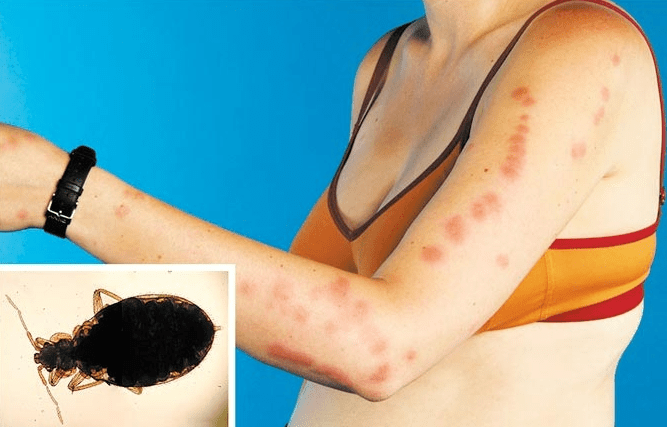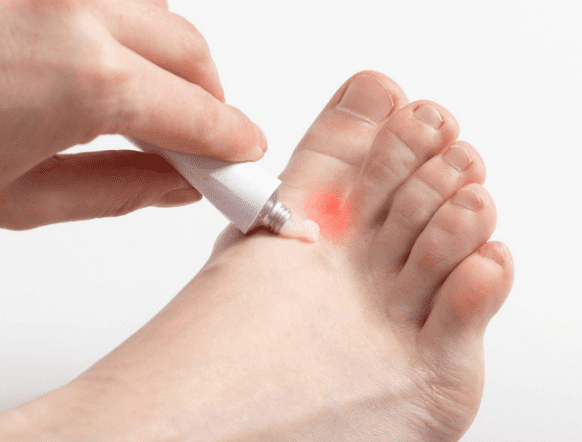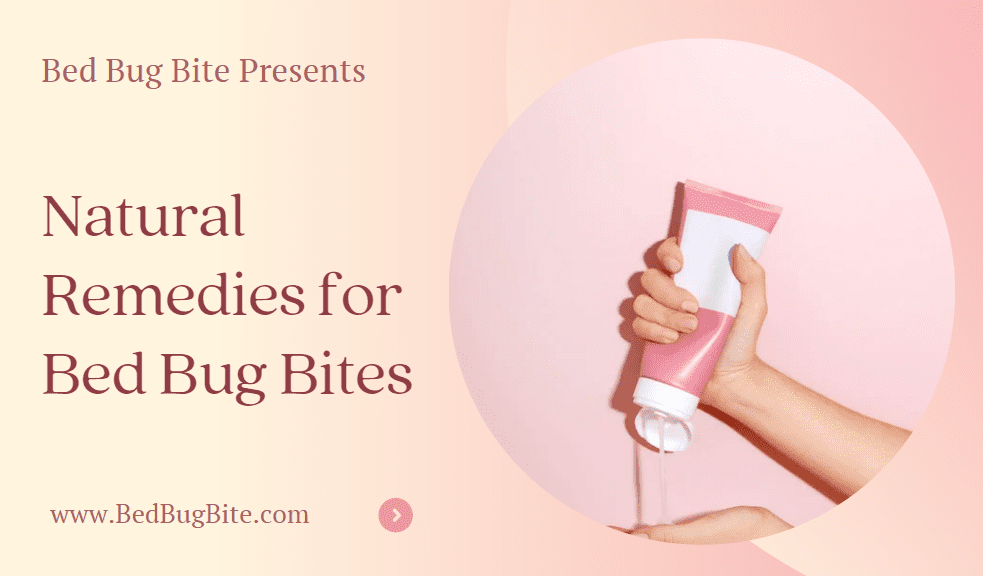Introduction
Welcome to our comprehensive guide on natural remedies for bed bug bites. Dealing with bed bugs can be a distressing experience, especially when you wake up to find those telltale bites on your skin. These tiny, elusive pests feed on human blood, often leaving behind itchy, red marks that can cause discomfort and frustration. However, there’s no need to despair. Our guide is here to provide you with safe, effective solutions to soothe and heal bed bug bites naturally.
Bed bugs are a common issue in households across the globe, thriving in places where humans rest. These pests are not only adept at hiding but also quick to spread from one place to another. Recognizing bed bug bites is the first step toward addressing them. Typically, these bites appear as small, red, and itchy bumps, often in a line or cluster on the skin exposed while sleeping. While bed bug bites themselves are not dangerous, the discomfort and itchiness they cause can lead to a significant impact on one’s quality of life.
Natural Remedies for Bed Bug Bites
It’s crucial to approach bed bug bites with care to prevent secondary infections caused by scratching. In this guide, we emphasize the importance of natural remedies, which offer a gentle yet effective way to treat bed bug bites. From aloe vera’s soothing properties to the anti-inflammatory benefits of baking soda, our solutions are designed to provide relief without the use of harsh chemicals. Rest assured, with our expert advice, you can tackle bed bug bites head-on, ensuring your and your family’s comfort and well-being.
By turning to natural solutions, you’re choosing a safe path to healing. Not only are these remedies effective, but they also align with a holistic approach to health. Let’s embark on this journey together, armed with the knowledge and tools to combat bed bug bites naturally.
Understanding Bed Bug Bites
Understanding bed bug bites is pivotal in our battle against these nocturnal pests. Bed bug bites are distinctive, often presenting as small, red welts on the skin. They typically appear in a line or cluster, a hallmark sign of these insects’ feeding patterns. Identifying these bites accurately is crucial, as it’s the first step toward effective treatment and prevention.
What Do Bed Bug Bites Look Like?

Bed bug bites manifest as small, red, and sometimes swollen spots. They might itch intensely and can appear more inflamed in individuals with sensitive skin. Unlike mosquito bites, which are more random in placement, bed bug bites are often found in a straight line or zigzag pattern, reflecting the pests’ methodical feeding process as they move across the skin.
Why Do Bed Bugs Bite?
Bed bugs are drawn to humans primarily for one reason: blood. Human blood is their source of nutrition, which they require to grow and reproduce. These bites are not a result of poor hygiene or a dirty environment but are simply due to the presence of humans in the space, making anyone a potential target for these opportunistic feeders.
Reactions to Bed Bug Bites
The reaction to a bed bug bite varies from person to person. Some may experience minimal to no symptoms, while others may develop noticeable itching, redness, and swelling. In rare cases, individuals might have an allergic reaction that requires medical attention. Understanding your body’s response to these bites is important in managing symptoms and preventing complications.
Recognizing and understanding the nature of bed bug bites is essential for anyone dealing with these pests. By identifying the signs early, you can take swift action to treat the bites and prevent further infestations. Remember, knowledge is your first line of defense in the fight against bed bugs.
Immediate Actions Post-Bite
Taking immediate action after discovering bed bug bites is crucial for minimizing discomfort and preventing infection. The urge to scratch these itchy welts can be overwhelming, but giving in can lead to broken skin and secondary infections. Instead, focus on simple, effective steps to clean and soothe the affected area. By adopting these initial measures, you can alleviate the symptoms and reduce the risk of complications.
Avoid Scratching
The first and most important rule is to resist the urge to scratch. Scratching can break the skin, making it susceptible to infection. Keep your fingernails trimmed and, if necessary, cover the bites with a bandage to discourage scratching, especially during sleep.
Cleaning the Bite Area
Properly cleaning the bite sites can prevent infection and aid in the healing process. Gently wash the affected areas with soap and water. This simple action helps remove any potential irritants from the skin and keeps the bites clean. Pat the area dry with a soft towel, avoiding rubbing that can exacerbate itching.
Applying Anti-Itch Creams or Natural Solutions

For immediate itch relief, consider applying over-the-counter anti-itch creams or natural remedies. Calamine lotion, hydrocortisone cream, or a paste made from baking soda and water can provide temporary relief. These topical treatments can help reduce the itchiness and discomfort associated with bed bug bites.
Seeking Medical Attention for Severe Reactions
While most bed bug bites resolve on their own without the need for professional medical treatment, severe reactions require attention. If you experience symptoms such as excessive swelling, fever, or signs of an allergic reaction, seek medical advice promptly. A healthcare provider can offer treatments to manage the reaction and prevent further complications.
By taking these immediate actions post-bite, you not only soothe the affected area but also lay the groundwork for a swift recovery. Remember, the key to managing bed bug bites effectively lies in prompt and appropriate care. This approach minimizes discomfort and paves the way for natural and safe healing.
Natural Remedies for Bed Bug Bites
Exploring natural remedies for bed bug bites is an effective strategy for those seeking gentle yet potent solutions. Nature offers a plethora of ingredients that can alleviate itching, reduce inflammation, and speed up the healing process. These remedies, easily found in your kitchen or local health store, stand as testimony to the power of natural healing. Let’s delve into some of the most effective natural remedies that offer relief from bed bug bites, emphasizing their application and benefits.
Aloe Vera
Aloe vera is renowned for its soothing and anti-inflammatory properties, making it an ideal remedy for bed bug bites. The gel extracted from its leaves provides a cooling sensation that can significantly reduce itching and swelling. Apply a small amount of pure aloe vera gel directly to the bites and let it dry. Its antimicrobial properties also help prevent infection, promoting faster healing.
Baking Soda Paste
Baking soda, or sodium bicarbonate, is a common household item that can effectively counteract the itchiness caused by bed bug bites. Mix one part baking soda with three parts water to create a paste, and apply it to the affected area. Leave it on for about 10 minutes before rinsing off with lukewarm water. This remedy works by neutralizing the acidic substance that causes itching, offering quick relief.
Tea Tree Oil
Tea tree oil is celebrated for its antiseptic and anti-inflammatory properties, which can be beneficial in treating bed bug bites. Dilute a few drops of tea tree oil with a carrier oil, such as coconut or olive oil, and apply the mixture to the bites. This not only soothes the skin but also aids in preventing bacterial infections due to its potent antimicrobial effects.
Cool Compresses
Applying a cool compress to bed bug bites can provide immediate relief from itching and reduce swelling. Wrap ice or a cold pack in a cloth and gently press it against the bites for a few minutes. The cold helps to numb the area, diminishing the itch and discomfort associated with the bites.
These natural remedies offer a safe and effective way to manage bed bug bites, harnessing the healing powers of nature. Incorporating these treatments into your care routine can help soothe the skin, reduce symptoms, and accelerate recovery, all while avoiding the use of harsh chemicals.
Enhancing Healing and Comfort
Preventing future bed bug infestations is essential for maintaining a healthy, pest-free living environment. The key to prevention lies in understanding bed bug behavior and taking proactive measures to make your home inhospitable to these unwelcome guests. By integrating simple yet effective strategies into your daily routine, you can significantly reduce the risk of bed bug invasion. Let’s explore some practical steps to safeguard your home against bed bugs, emphasizing vigilance and regular maintenance.
Regular Inspection and Cleaning
Regularly inspect your living spaces for signs of bed bugs, especially in and around sleeping areas. Use a flashlight to examine mattress seams, bed frames, and furniture for bed bugs or their droppings. Vacuum your home frequently, focusing on carpets, upholstery, and other potential hiding spots. This routine cleaning helps remove any bed bugs or eggs that may have found their way into your home.
Encase Mattresses and Pillows
Invest in high-quality mattress and pillow encasements designed to keep bed bugs out. These covers are made of tightly woven fabric that prevents bed bugs from entering or escaping, effectively protecting your sleeping areas from infestation. Ensure the encasements are intact and free of tears to maintain their effectiveness.
Reduce Clutter
Clutter provides bed bugs with numerous hiding spots, making it harder to detect and eliminate them. By minimizing clutter in your home, you reduce the chances of bed bugs establishing a foothold. Regularly declutter your space, disposing of unnecessary items and organizing your belongings to eliminate potential bed bug habitats.
Be Cautious When Traveling
Bed bugs are notorious hitchhikers, easily traveling from place to place on luggage, clothing, and other personal items. When staying in hotels or other accommodations, inspect the room for bed bugs and keep your luggage off the floor, preferably on a luggage rack. Upon returning home, wash your clothes in hot water and vacuum your suitcase to prevent any bed bugs from spreading.
Use Bed Bug Monitors
Consider using bed bug monitors or traps around your bed and furniture. These devices can detect bed bugs early, before an infestation becomes established. Regularly check and maintain these monitors to ensure they are effective in alerting you to the presence of bed bugs.
Preventing bed bug infestations requires vigilance, regular maintenance, and a proactive approach to home care. By implementing these strategies, you can create an environment that is less inviting to bed bugs, protecting your home and your family from the distress and discomfort these pests can cause.
Preventing Future Bites
Navigating the aftermath of a bed bug infestation requires a thoughtful approach to restore your home to its pre-infestation state. Beyond the physical eradication of bed bugs, there’s a need for repairing any damage and implementing strategies to prevent future occurrences. This phase is crucial for ensuring your living space is not only pest-free but also conducive to health and well-being. Here’s a guide to effectively manage the post-infestation scenario, focusing on repair, recovery, and reinforcement against future infestations.
Repairing Damage and Cleaning Up
Bed bug infestations often leave behind physical damage, including stains on bedding and furnishings, as well as potential damage from pest control measures. Begin by thoroughly cleaning affected areas, washing bedding and clothes in hot water, and steam cleaning carpets and upholstery to remove any lingering pests or eggs. Consider professional cleaning services for extensive infestations to ensure a thorough job.
Assessing and Replacing Damaged Items
Evaluate your furniture, mattresses, and other items for damage. In some cases, it may be necessary to replace heavily infested items to prevent a recurrence. When replacing items, choose bed bug-resistant options when possible and use protective covers on mattresses and pillows to deter future infestations.
Strengthening Preventative Measures
With your home clean and repaired, reinforce your preventative measures against bed bugs. Update your cleaning routines to include regular inspections, especially after traveling or receiving second-hand furniture. Revisit the effectiveness of your bed bug monitors and traps, adjusting placement or trying new products as needed.
Educating Household Members
Education plays a vital role in preventing future infestations. Ensure all household members are aware of the signs of bed bugs, the importance of early detection, and how to respond if bed bugs are suspected. Sharing knowledge about prevention and the steps to take in case of an infestation can empower everyone in your home to act quickly and effectively.
Maintaining Vigilance
The final step in managing the aftermath of a bed bug infestation is maintaining a vigilant attitude. Regular checks and a proactive stance on prevention can make a significant difference in avoiding future infestations. Remember, bed bugs are opportunistic pests, but with consistent effort, you can keep your home safe and secure.
Recovering from a bed bug infestation is a multifaceted process that involves cleaning, repairing, and reinforcing your home against future threats. By taking these steps, you can ensure your living space remains a comfortable, bed bug-free environment for you and your family.
Professional Help: When to Call the Experts
When dealing with bed bug bites, it’s crucial to recognize when professional medical advice is necessary. While most bed bug bites can be treated with natural remedies and over-the-counter solutions, certain situations require the expertise of a healthcare professional. Understanding the signs that indicate a need for medical consultation can help prevent complications and ensure proper care. Let’s delve into scenarios where seeking medical advice becomes imperative and the benefits of professional healthcare in managing bed bug bites.
Recognizing Signs of Severe Allergic Reactions
In some cases, individuals may experience severe allergic reactions to bed bug bites, characterized by symptoms such as difficulty breathing, swelling of the face, lips, or tongue, and intense itching or hives that spread beyond the bite site. These symptoms indicate an anaphylactic reaction, a medical emergency that requires immediate attention. Prompt medical treatment can prevent serious complications and provide relief through appropriate interventions.
When Infections Develop
Scratching bed bug bites can lead to secondary infections, marked by signs such as increased redness, swelling, warmth around the bite, pus, or fever. These infections can escalate if not properly treated, potentially leading to more severe health issues. A healthcare professional can prescribe antibiotics or other treatments to address the infection and prevent further complications.
Managing Persistent or Severe Symptoms
Some individuals may experience persistent or severe symptoms from bed bug bites, including extensive itching, discomfort, or sleep disturbances. When over-the-counter treatments and natural remedies fail to provide relief, consulting a healthcare provider can offer access to prescription medications, such as stronger topical corticosteroids or oral antihistamines, that can effectively manage symptoms.
Professional Advice for Sensitive Groups
Certain groups, including children, the elderly, and those with compromised immune systems, may be more vulnerable to complications from bed bug bites. In these cases, seeking medical advice ensures that treatment plans are appropriately tailored to the individual’s specific health needs, minimizing risks and promoting effective healing.
The Benefits of Professional Healthcare
Consulting a healthcare professional for bed bug bite treatment offers numerous benefits. It provides a precise diagnosis, access to more effective treatments, and peace of mind knowing that potential complications can be addressed promptly. Additionally, healthcare providers can offer advice on preventing future bites and managing infestations, contributing to overall well-being.
Understanding when to seek medical advice for bed bug bites is essential for ensuring proper care and preventing complications. By recognizing the signs that warrant professional attention and appreciating the benefits of healthcare intervention, individuals can navigate the challenges of bed bug bites more effectively, ensuring a swift and safe recovery.
Conclusion
In conclusion, managing and recovering from bed bug bites naturally encompasses a holistic approach that extends beyond simple home remedies. It involves a comprehensive strategy that includes identifying and treating bites, employing natural and preventive measures, understanding when to seek professional medical advice, and maintaining a vigilant stance against future infestations. By integrating these practices, individuals can effectively mitigate the discomfort associated with bed bug bites and safeguard their living environments against these persistent pests. Let’s summarize the key takeaways and provide additional resources for those seeking further assistance.
Key Takeaways for Effective Management
- Natural Remedies and Over-the-Counter Solutions: Utilize a combination of natural remedies, such as aloe vera, tea tree oil, and over-the-counter treatments to alleviate itching and inflammation.
- Preventive Measures: Implement preventive strategies, including regular bed linen inspections and maintaining cleanliness, to deter bed bug infestations.
- Seeking Professional Advice: Recognize the signs that necessitate medical consultation, especially in cases of severe allergic reactions, infections, or persistent symptoms.
- Maintaining Vigilance: Stay informed about bed bug behaviors and prevention techniques to reduce the risk of future bites and infestations.
Additional Resources for Further Assistance
For those seeking more in-depth information or facing challenging infestations, a wealth of resources is available:
- Pest Control Professionals: Consult with licensed pest control experts who specialize in bed bug eradication for tailored solutions.
- Healthcare Providers: Seek advice from healthcare professionals for treatments that are specifically suited to your health needs and conditions.
- Educational Websites: Visit reputable websites such as the Environmental Protection Agency (EPA) or the Centers for Disease Control and Prevention (CDC) for comprehensive guides on bed bug prevention and management.
In our quest to live in a bed bug-free environment, it’s imperative to approach the issue with knowledge, preparedness, and the right resources. By adopting a proactive and informed stance, we can effectively combat bed bug bites and ensure our homes remain safe and comfortable sanctuaries for all. Remember, the key to overcoming bed bug challenges lies in awareness, prevention, and timely action.




